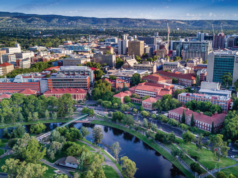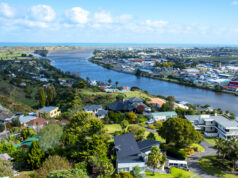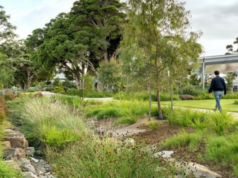As much of the world works towards carbon neutrality by 2050, IPWEA Australasia’s Director of Sustainability, Jacqueline Balston, and CEO, David Jenkins, insist there is an urgent need for sustainable infrastructure solutions.
“It is sobering to realise that over the past 100 years, humans have burned approximately 1,800 billion barrels of oil, 377 billion tonnes of coal, 150,000 billion m3 of gas1 and cut down 46 per cent of all trees on earth2, write Jacqueline Balston, IPWEA Director of Sustainability, and David Jenkins, IPWEA CEO.
“As a result, 1.5 trillion tonnes of CO2 have been released into the atmosphere since 17513 and levels are now higher than at any other time in the past 800,000 years – and rising rapidly. Added to the CO2 are the emissions of other greenhouse gasses including methane and nitrous oxide.
“Most of us are now well aware of the effect that these increased levels of greenhouse gasses have in the atmosphere. As they trap solar heat close to the surface the result is an increase to average and extreme temperatures, cyclone intensity, humidity and rainfall (especially in the tropical regions). In the drier mid-latitudes the frequency and severity of drought and bushfire are increased. And in the oceans, CO2 forms carbonic acid and reduces the pH of the water, the warmer water expands, land-based ice caps and glaciers melt, and the sea level rises. Evidence for all these changes is now well documented and the impacts on infrastructure are increasing.
“In efforts to reduce greenhouse gas emissions, the 2015 Paris Agreement set out an internationally agreed global framework to avoid dangerous climate change by limiting ‘global temperature rise this century well below 2oC above pre-industrial levels and to pursue efforts to limit the temperature increase even further to 1.5 oC4. To achieve the goal, global net anthropogenic CO2 emissions must fall to about 45 per cent of 2010 levels by 2030 and reach net zero by 2050.
“Although zero emissions might seem like an ambitious target, more than 120 countries, 449 cities, 21 regions, 995 companies, 505 organisations and 38 investors have all committed to reach carbon neutrality by 2050 as part of the Climate Ambition Alliance (June 2020). Sebastian Pinera, President of Chile and founder of the Alliance correctly stated late last year that ‘we are the first generation to suffer the effects of climate change and the last one that can do something about it’5. In Australia, the ACT, Queensland, Victoria and the cities of Melbourne and Sydney as well as numerous organisations are all signatories to the Alliance5.”
Building sustainable infrastructure
Balston and Jenkins continue: “In identifying sectors for action, the World Bank has stated that ‘approximately 70 per cent of global greenhouse gas emissions come from infrastructure construction and operations such as power plants, buildings, and transport’6.
“The Australian Infrastructure Audit 2019 also stated that ‘infrastructure is the most significant contributor to Australia’s greenhouse gas emissions, however progress to reduce emissions is inconsistent and policy directions remain uncertain’7.
“There is then an urgent need for new ways to manage the planning, construction, maintenance and renewal of infrastructure assets to increase their climate resilience and achieve carbon neutrality.
“For asset managers there is now an expectation that infrastructure will be included in organisational carbon neutral plans and actions to shift to low carbon infrastructure will be implemented as soon as possible. Actions will include tracking emissions, converting to renewable energy, switching to electric transport options, constructing light rail to reduce car usage, purchasing carbon neutral materials, constructing solar passive buildings and, if necessary, investing in carbon offsets.
“In support of the IPWEA Practice Note 12.1 ‘Climate change impacts on the useful life of infrastructure’ a new Practice Note is currently in development. It will enable asset managers to identify options that will extend the useful life of an asset, reduce maintenance cost and provide the co-benefits of reduced heat island effects, climate resilience and low carbon materials for use in infrastructure construction. The Practice Note is expected to be launched by December 2021.”
1 The Guardian (2020), Keep it in the Ground. Accessed 23 June 2020. https://www.theguardian.com/environment/ng-interactive/2015/apr/10/how-much-fossil-fuel-are-we-using-right-now
2 Crowther, T.W., Glick, H.B., Bradford, A.A. (2015), Mapping tree density at a global scale. Nature, 525, 201-205. Accessed 23 June 2020. https://www.nature.com/articles/nature14967
3 Ritchie, H., Roser, M. (2019), CO2 and Greenhouse Gas Emissions. Our World in Data. Accessed 23 June 2020. https://ourworldindata.org/co2-and-other-greenhouse-gas-emissions
4 United Nations Climate Change (2020), United Nations Climate Change. Accessed 9 June 2020. https://cop23.unfccc.int/
5 Infrastructure Australia (2019), Australian Infrastructure Audit 2019, Commonwealth of Australia, Canberra.














